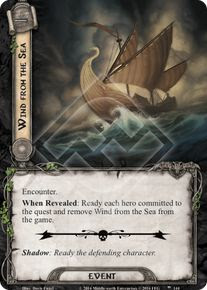The captain stood studying it through the periscope. If the Geiger counter was correct no life could exist there for more than a few days, and yet it all looked so normal in the spring sunlight that he felt there must be people there. There did not seem to be glass broken in the window, even, save for a pane here and there. He turned from the periscope. "Left ten, seven knots," he said. "We'll close the shore here, and lie off the jetty, and hail for a while."
- Nevil Shute: On the Beach
Fantasy Flight Games have come up with a Fallout board game, and of course we had to try it.
Nicholas Roerich: Tombs in the Desert, 1930
**
At first glance, the game appears bewildering: there's piles and piles of tokens, a massive card library and several encounter decks, and a map made up of hexagonal tiles that mostly start out face down. As seems to be standard with Fantasy Flight products, there's both a "learn to play" booklet and a heftier rules reference.
Appearances are deceptive, though, because once you sit down and start playing, Fallout is engagingly simple to pick up, and very much worth it. Each player controls a survivor, who treks through the wasteland, fighting monsters and completing quests. For every game, you pick a scenario, and they all start with some quests in play; completing them shuffles new cards into the encounter decks, gets you stuff and agenda cards, and so on. Ultimately the game is won by the first player who gains a set amount of influence from their (secret!) agenda cards.
Here's a shot from one of our first games; my Wastelander is armed with a sniper rifle and wearing metal armor, while on my left is a Brotherhood Outcast with a knife. Each player gets a cute little cardboard thing where we keep track of our hit points, rads and experience.
**
A recurring theme in our first, two-player games was that my friend really liked playing the Brotherhood Outcast, running around in power armor and stabbing the shit out of everything. He discovered this in our first game, then tried playing the Vault Dude in the next one and being serious, and went back to stabbing everything in the third game. When literally the first loot card he got was a Combat Knife, clearly the wasteland spirits wanted it, so who were we to argue?
Now, as it happens, I have quite a few Warhammer 40,000 bits lying around, so I decided to make him a little Fallout figure to capture his particular play style: a World Eater Chaos Space Marine.
He will stab you. Now, arguably I could just as well have made him a Blood Angel, but the Chaos bits are more fun and really, what's the difference anyway?
I even gave him a little World Eater logo transfer.
**
Next, it was time for a four-player attempt. The amount of influence needed to win the game decreases with the number of players, so there should be less turns with four players than with two. Overall, I think the game took a lot more time, though: there was more deliberation, and the possibility of trading with other players led to some complex trading schemes - and we didn't even trade any agendas!
Here's our World Eater Brotherhood Outcast in action, with my brother's ghoul literally hiding behind him.
Eventually, with three copies of the Freedom agenda, my brother won.
Each scenario has two factions, titled freedom and security: in the Capital Wasteland they're the Brotherhood and the Enclave, in the Commonwealth they're the Railroad and the Institute. If you hold one of their agendas, advancing that faction's interests will net you influence - but if either faction gains too much power, they win the game and all the players lose!
**
We tried another four-player game later, and while it was fun, it highlighted what I think is the most serious problem with the game: deadlock.
Especially with four players, it's likely that someone will be trying to advance both factions. Unfortunately, this can easily lead to a situation where advancing the main quest would mean losing the game for everyone, but a shortage of side quests means there's also few or no ways to get additional agenda cards. This is especially bad for players who end up with an unwieldy combo of agendas, like a straight freedom/security split. Effectively this means the game is deadlocked: no-one can win, but everyone will eventually lose as the factions gain power. It's a little frustrating; we ended up losing on purpose by advancing the main quest. That's not really a good outcome.
**
Still, though, we've enjoyed ourselves, and with an expansion already announced, we'll definitely be returning to the wasteland! There are lots of mechanics in this game that I like, it does a first-class job of capturing the spirit of the video games, and above all, it's a fun time.






















